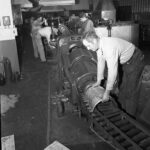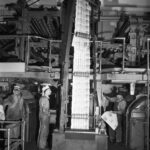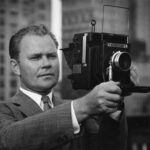The Atlanta Journal-Constitution
Founded as two separate newspapers in the 1800s, the Atlanta Journal and the Atlanta Constitution served as Atlanta’s go-to for news and information. The Atlanta Journal even sported the motto “Covers Dixie like the Dew.” Both newspapers were bought by Cox Enterprises in the 1950s, but did not fully merge newsrooms until 1982. Afterwards they continued printing separate papers until 2001 when the two combined to create the new masthead The Atlanta Journal-Constitution. Both newspapers helped nourish the careers of famous journalists such as Henry W. Grady, Margaret Mitchell, and Ralph McGill.
Early news printing consisted of using linotype machines to create blocks of text which were created in the composing room by hand. After inspection the text plates were then transformed into curved lead printing plates. Each plate could weigh up to 40lbs per page, and went through a cooling process before making its way to the printing press. The curvature of the plates allowed them to be mounted to the rollers of the press, which would ink the plate and print the pages onto the newsprint. The pages would be assembled, and spot checked by workers before being packaged for delivery.
The use of photography within the newspaper did not become common until the 1930s due to the development of flash bulbs and portable cameras. Many articles featured the use of illustrations or engravings to enhance the story, but not as a tool for information itself. On special occasions or big stories photographers would be sent to capture events such as presidential visits to the city, natural disasters, or film premieres like Gone With The Wind. With the new advancements in photography, photojournalism began to take shape and utilized photo essays to tell a story.
The Atlanta Journal Magazine
Magazines like the Atlanta Journal Sunday Magazine relied heavily on imagery and documented lifestyle pieces as well as news events. Created in 1912, the magazine evolved over time to include in-depth looks on notable figures, different occupations of Georgia residents, sports, as well as scientific advancements. In the 1950s the Journal and Constitution combined to create a Sunday edition known as the Atlanta Journal and Constitution Magazine. In 1980 it would change once more to the Atlanta Weekly.
One aspect that set the magazine apart from the newspaper was the use of large colorful photographs, both within the articles and as print advertisements. While every story did not run in color, the majority of images were photographed on large format color positive film. Over time the layers of the color dye will shift causing discoloration, most noticeably a magenta overtone to the image.

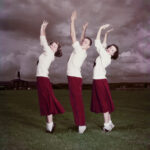

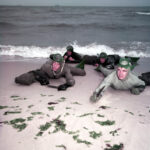
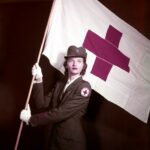



Magazine Photographers
The Atlanta Journal-Constitution employed their best staff photographers to cover stories for the weekly magazine. Two of these photographers were Kenneth Rogers and Floyd Jillson, both of whom worked for the paper for over 40 years each.
Kenneth Rogers, born 1907, began his career with the newspaper in 1923 as an office assistant during high school. In his senior year he dropped out to pursue a career with the paper full time. He rose to the head of the photography department and held the position until 1952 until the two newspaper merged. He then became the Director of Magazine Photography and remained there until his retirement in 1972. Rogers covered some of the most important stories facing Atlanta, and photographed everything from sporting events, political campaigns, to the Georgia countryside.
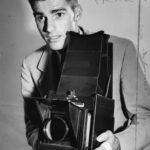
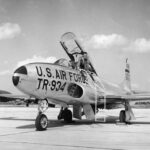
Floyd E. Jillson, born 1926, began a similar career path with the Atlanta Journal-Constitution after working as a projectionist in the Bell Bomber Plant at 18. His boss later referred him to the AJC where in 1950 he began a career as a news department photographer. Jillson later transferred in the 1950s to the magazine department and primarily worked there throughout the 1960s and 1970s. Jillson covered a variety of subjects, most notably the funeral procession for Martin Luther King Jr., political figures such as Julian Bond, Jimmy Carter, and athletes like Hank Aaron. As a licensed pilot he was also able to photograph aerial views of Atlanta as it changed over the years through economic growth.


